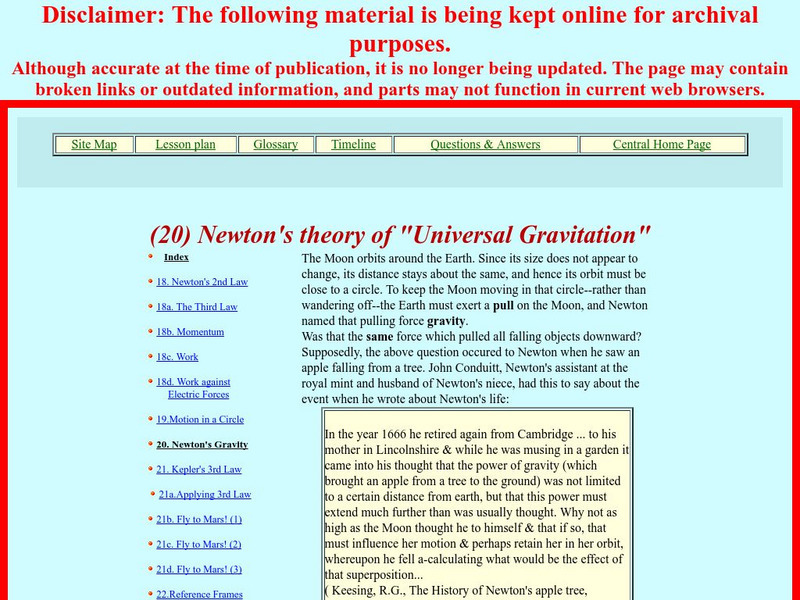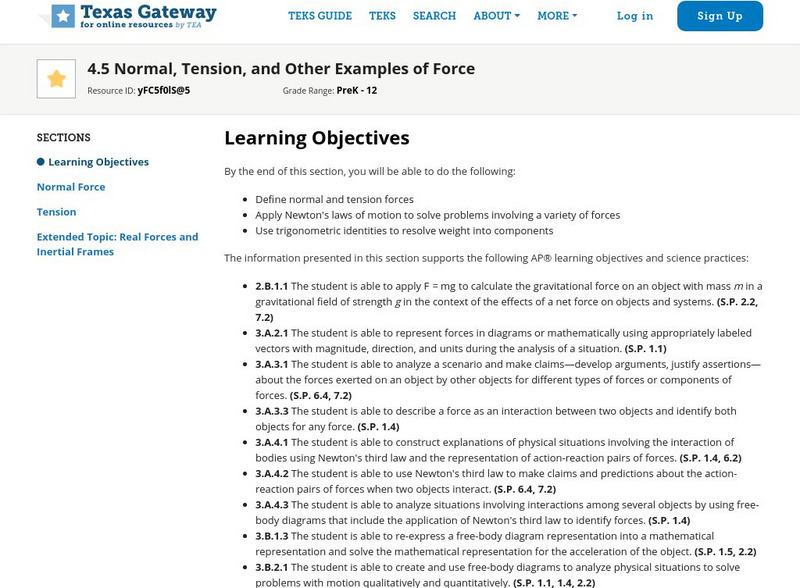Vision Learning
Visionlearning: Mechanics: Gravity: Newtonian Relationships
Explanation of how astronomers and scientist developed the current theories of gravity.
Open Curriculum
Open Curriculum: Gravity
This article helps students understand and apply the concept of gravity and Newton's Laws.
NASA
Nasa: Newton's Theory of "Universal Gravitation"
This site, which is provided for by NASA, discusses the thinking which led Newton to understand universal gravitation.
Georgia Department of Education
Ga Virtual Learning: Ap Physics 1: Gravity
Combined with aspects of circular motion, students discover that Kepler's third law follows directly from the law of universal gravitation. This unit will expand upon the conservation of energy principle for problems beyond the confines...
Texas Education Agency
Texas Gateway: 4.5 Normal, Tension, and Other Examples of Force
By the end of this section, you will be able to define normal and tension forces, apply Newton's laws of motion to solve problems involving a variety of forces, and use trigonometric identities to resolve weight into components.
NASA
Nasa: Vectors
This site from NASA provides an excellent tutorial on vectors and their use in physics to describe the motion of objects. Vector addition and resolution are illustrated.
University of Virginia
Uva Physics: Using Vectors to Describe Motion
Background information on vectors and their use in describing motion in two dimensions. A comparison of Aristotle's and Galileo's perspectives on force and motion is given.
University of St. Andrews (UK)
University of St. Andrews: Orbits and Gravitation
A page describing the physics, mathematics, and historical figures associated with planetary motion, satellite motion, and universal gravitation.







